A Conversation with Katie Aselton, Ben Kasulke, and Nat Sanders (THE FREEBIE)
The main characters of The Freebie, Darren (Dax Shepard) and Annie (Katie Aselton), are in a stable seven-year relationship built on love, trust, and communication. While they have fun together and really love one other, they also opt out of sex for crossword puzzle races. After realizing how many months it’s been since they’ve made love, they come up with an idea: one night of freedom to sleep with whoever they want, no strings attached. They hope a “freebie” will be the cure they need… but whether or not they can go through with it is a different story.
The Freebie premiered at the 2010 Sundance Film Festival where it was programmed in the inaugural NEXT section. It was subsequently picked up for distribution by Phase 4 Films and it opens theatrically in New York City on September 17, 2010, at the Angelika. At the film’s official website, you can read up relationship do’s and don’ts, learn about non monogamy, and even plan your own freebie!
Like many other m-word movies, The Freebie is a true collaboration between those involved, but this is especially true when it comes to the director, DP and editor. Hammer to Nail sat down—on separate occasions—with the three primary creative forces behind The Freebie to hear the inside scoop.
Katie Aselton (Writer/Director/Producer/Lead Actress)
H2N: How did you come up with the idea for the film? After seeing it I wondered if this was something you’d experienced at all.
KA: Well… the idea of the making the movie came from being an out of work actor wanting a role that no one would give me, so since I’m married to one of the “do it yourself” guys (Mark Duplass), I had no excuse to not make a movie. So after that it was more like, “Okay now I have to come up with an original idea,” which is only mildly daunting. But what I realized is that it doesn’t have to be the most original idea in the whole world because nothing is really original and because people have been telling stories about relationships as long as we’ve been telling stories, but your take on it can be original. The concept came out of a very organic, natural conversation with a very dear friend of mine where we found ourselves fantasizing about what it would be like to not be with our significant others, even though we were perfectly happy and never would trade that for a million years. We were toying with that idea of being able to take a night with no strings attached and wondering if your relationship remains unscathed. It was the first idea for a film that came to me that I could see start to finish. I could see the entire scope of the film in my head—it all unfolded very naturally for me and there were really no moments of banging my head against a wall thinking, “I don’t know where to go from here.”
H2N: Was that original concept something you worked on with Mark and other people in the film community?
KA: Not really. I did tell Mark about it of course. And Mark said, “Just run with it.” So I came up with a very short outline of all the scenes and Mark gave me some feedback, some of which I used, and some of which I threw away. Once my core team came together, which was Ben Kasulke (DP) and Nat Sanders (Editor), I sent them the version of the outline I had made and they had great notes. What’s awesome about them is that they are great storytellers as well so I could really lean on them creatively to bring a lot. After that it became a unified voice of all the people behind the film.
H2N: So you took on the roles of lead actress, producer, and director—after also writing the outline. That’s brave.
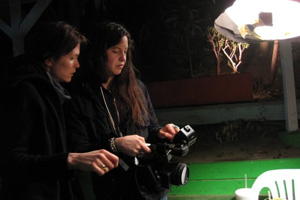 KA: On most movies it’d be brave, but we had a very small group of people working on the film and we approached it as a collaborative. We’d come together at the beginning of each day and talk about where we wanted to go, what the arc was, so by the time we said action it was very easy for me to take a step back and know that everything was in good hands. It was very easy for me to put a lot of trust in Ben and Hillary (Hillary Spera, Camera operator) and Nat, and Adele, my producer, to really be my eyes. The acting part of it was easy. It was only difficult when I had to do authoritative things as a director. We actually had another actor cast as Darren before Dax Shepard and we shot a couple days with him and it didn’t work out, so I had to fire him. That was tough. But it was empowering because I felt like, “This is my movie. No one’s gonna mess with me.” (Laughs) But we only shot eleven days so it wasn’t this strenuous, arduous task. The eleven days was probably the easiest part. Where things got murky with the acting/directing/producing has been in the tail end now because as a director/producer your job just never ends. As an actor it ends! My job has kept on going and I haven’t been particularly prepared for that, or excited about it. Adele and I have had to figure it out as we go along.
KA: On most movies it’d be brave, but we had a very small group of people working on the film and we approached it as a collaborative. We’d come together at the beginning of each day and talk about where we wanted to go, what the arc was, so by the time we said action it was very easy for me to take a step back and know that everything was in good hands. It was very easy for me to put a lot of trust in Ben and Hillary (Hillary Spera, Camera operator) and Nat, and Adele, my producer, to really be my eyes. The acting part of it was easy. It was only difficult when I had to do authoritative things as a director. We actually had another actor cast as Darren before Dax Shepard and we shot a couple days with him and it didn’t work out, so I had to fire him. That was tough. But it was empowering because I felt like, “This is my movie. No one’s gonna mess with me.” (Laughs) But we only shot eleven days so it wasn’t this strenuous, arduous task. The eleven days was probably the easiest part. Where things got murky with the acting/directing/producing has been in the tail end now because as a director/producer your job just never ends. As an actor it ends! My job has kept on going and I haven’t been particularly prepared for that, or excited about it. Adele and I have had to figure it out as we go along.
H2N: It seems like you all have had no trouble figuring it out.
KA: Yes, let’s not kid ourselves, it’s all been incredibly worth it. It’s just been insane.
H2N: Since the process is such collaboration between you and your crew, how did you distinguish as a director where your voice needed to be the primary one, and where you needed to just listen to what your team said?
KA: It was 100% collaborative. What I said to Ben was, “I want it to be pretty.” I didn’t want it to feel like every other mumblecore movie that’s come and gone, because you can make these look pretty now. It’s within your capability. We threw around some references until we looked at each other with that excited face and I knew I could completely let it go into his hands. One of the smartest things I did as a director was to hire incredibly capable people. There was no need for me to micromanage at all onset. I knew Ben and Hillary were going to kill it. That was never a worry. I didn’t even have a monitor on set! With Nat in the editing process I let him completely run with a first cut, which was amazing and then we worked for a few months and since it was my first film I didn’t have the vocabulary—so I’d take out scenes and put them back in and take them out and put them back in… But Nat, hands down, found the story, and then we found the final product. He’s amazing. It took a lot of patience for him.
H2N: Has this film made you want to direct more as opposed to just acting?
KA: I made this film to get more acting jobs and I have had not one offer as an actor since I made this film! But I’ve had all kinds of opportunities to [direct] more movies, which is totally backwards because I feel people should be much more selective about who is making movies. I’d love to make another movie though and I’ve got another few things I’m working on. I don’t want to rush into making something just because I can and people want me to. I feel a lot of pressure. But I want to let Freebie live its life and see how I feel. But I’d love a few great acting roles…
H2N: You and Dax had such great chemistry in the film. Did you all rehearse a lot?
KA: Nope. I met Dax like twelve hours before we started shooting. I am not kidding.
H2N: So it was like, “Hi. We’ve been together for seven years.”
KA: Yeah. “Do you want to pretend we are married?” (Both laugh) And the crazy thing is the chemistry. It’s inexplicable. You cannot fake that. The other guy we had in that role seemed great at first, but it turned out there was no chemistry. He was uncomfortable and everyone was uncomfortable and the whole movie started going down the drain. And then Dax walks in and it clicked. And everyone was like “Of course you guys are married!” It was one of these things where my husband was in the other room, but sitting next to Dax I felt like we’d been married for seven years. Dax was an amazing find.
H2N: How did you find him?
KA: It was through Ben. (Both laugh) We were all like, “What are we going to do? Who the fuck is going to do this?” Now that I had fired an actor, I thought okay…. I could go to Mark, but then it’d be Puffy Chair Two. I could go to Josh Leonard, but then he just did Humpday. I just didn’t know what to do. Ben has been quoting Dax since I met him—from the film Idiocracy. And he was like, “Didn’t Mark take a meeting with Dax a year ago?” He had. So Mark completely cashed in a favor that he was not ready to cash in. (Both laugh) He called Dax and was like, “My wife is making a movie that starts tomorrow. Would you be interested?” And Dax was like, “Yep.” He didn’t need to see an outline or anything. So he showed up probably thinking, “This is going to be a steaming piece of shit,” but I think he was interested in working in that Duplassian way. Since he had no expectations he just walked on and was open, available, and game.
H2N: He handled the drama and the depth in his role really well.
KA: Yeah, and who’s seen him do that, you know?
H2N: Absolutely. And it seems like people love the film.
KA: Well, there are plenty who don’t! (Both laugh) My favorite one is, well, I kind of went to the dark side the other day online…
H2N: Oh no.
KA: And people who haven’t seen the film, just the trailer, are writing insane diatribes about how unoriginal it is. And they haven’t seen it! You should look. But it’s exciting people are talking about it. Some guy saw our poster, which I admit is super glossy and sort of Judd Apatow-ish and he was like “Stupid! Stupid! Stupid! Why does Hollywood keep churning out all these generic factory made romantic comedies?”
H2N: Hilarious.
KA: Yeah, at Sundance I thought Dax was going to get stones thrown at him. The audience hated his character!
H2N: Whoa.
KA: They were talking back to the screen at our first screening. Dax was traumatized.
H2N: At Sundance?!
KA: Yes! And at SXSW the audience loved him and thought I was a whore in the situation. At the Sundance Q&A someone was like, “Was it intentional to have Dax look like Zach Braff?”
H2N: Oh My god. (Both laugh)
KA: I know. And at Sarasota, where the median age of the audience is 76, some like 90-year-old woman was like (Katie puts on a Jewish accent), “Now honey when you got on him at the beginning I just don’t understand why you just didn’t have sex.” I was like, “Yeah, you’re right.”
H2N: But if you had you wouldn’t have had a film.
KA: Exactly.
Ben Kasulke (Director of Photography)
H2N: You’ve been the cinematographer on how many features now?
BK: Twenty-one features.
H2N: In how many years?
BK: Five years.
H2N: Wow. With films such as Humpday, Nights and Weekends, The Freebie, and the other 18, you’ve been one of the primary forces defining the look of new American indie films. What an accomplishment.
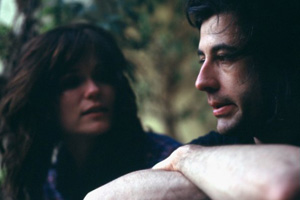 BK: Thanks. Well there are a few different types of films I work on. One is the performance-centric film, which has a feeling of a doc shoot. Those films tend to be made very quickly and for a little budget. I think that the look that’s come out of them is that I’ve been trying to do the most I can with what I have. Lens and filter choices become a matter of necessity. Lots of films like Humpday, The Freebie, Nights and Weekends are heavily reliant on actor performance above all else. They aren’t scripted films; they are scripted ideas with very developed story lines. The shooting process and production process centers completely on the performers’ ability to write a scene on the fly. To let that happen and let them have that magic spark you need to back off all the machinery of filmmaking. Actors don’t have marks; actors don’t have repeat takes—it’s really like shooting a doc. These films are made very quickly in nine to eleven days. Humpday was made in ten days. The Freebie was made in eleven. You kind of just have to wing it. It’s that idea of run and gun with really wonderful actors who happen to be great writers. It’s tricky to shoot that way for a lot of people. Especially as a DP, because you have to let go of the ego and trust that the story and performance are going to sell the film as a whole. There’s not a lot of lighting, there’s no focus pullers. Myself, and usually a second camera operator, are attempting to recreate the compositional shot-by-shot film grammar that we grew up seeing in Hollywood films. My hope is that when I’m shooting these things someone will have to ask whether or not a certain scene is improvised and not have to assume that the entire film is improvised. I hope I can do that in where I place a camera. I tend to create a lot of scenes shot with over the shoulder coverage like classic Hollywood films, but feel like the people next door just talking to one another.
BK: Thanks. Well there are a few different types of films I work on. One is the performance-centric film, which has a feeling of a doc shoot. Those films tend to be made very quickly and for a little budget. I think that the look that’s come out of them is that I’ve been trying to do the most I can with what I have. Lens and filter choices become a matter of necessity. Lots of films like Humpday, The Freebie, Nights and Weekends are heavily reliant on actor performance above all else. They aren’t scripted films; they are scripted ideas with very developed story lines. The shooting process and production process centers completely on the performers’ ability to write a scene on the fly. To let that happen and let them have that magic spark you need to back off all the machinery of filmmaking. Actors don’t have marks; actors don’t have repeat takes—it’s really like shooting a doc. These films are made very quickly in nine to eleven days. Humpday was made in ten days. The Freebie was made in eleven. You kind of just have to wing it. It’s that idea of run and gun with really wonderful actors who happen to be great writers. It’s tricky to shoot that way for a lot of people. Especially as a DP, because you have to let go of the ego and trust that the story and performance are going to sell the film as a whole. There’s not a lot of lighting, there’s no focus pullers. Myself, and usually a second camera operator, are attempting to recreate the compositional shot-by-shot film grammar that we grew up seeing in Hollywood films. My hope is that when I’m shooting these things someone will have to ask whether or not a certain scene is improvised and not have to assume that the entire film is improvised. I hope I can do that in where I place a camera. I tend to create a lot of scenes shot with over the shoulder coverage like classic Hollywood films, but feel like the people next door just talking to one another.
H2N: Do different directors you work with within this genre approach you and attempt to create a specific look within their improvised schema? I’ve noticed differences within the films you’ve worked on such as Kris Swanberg’s film It was Great but I was ready to come home and in The Freebie compared to Humpday or Nights and Weekends. In Kris’s film some of the compositions seemed very planned and artful. Is this something you and the director planned and how does this vary from film to film?
BK: A lot of that has to do with an individual-to-individual collaboration with the director and also the location. On Kris’s project, I had just met Jade Healy and David Lowery for the first time. Kris and I had talked on the phone a few times and had met a few times at SXSW. She asked me to do the project and we didn’t have any tech scouts or anything like that. We are all going to meet and go on a trip together. I knew that I wanted one thing to happen. I knew that if I was going to shoot a movie about two people traveling in Costa Rica that the movie couldn’t be about pretty shots of Costa Rica. It had to be about these two characters and the backdrop was secondary. I think that’s something I picked up from Claire Denis in her interview about Beau Travail. She’d be shooting in these beautiful locations and if the location ever took precedent over the characters than I think you kind of undermine the strength of the narrative.
H2N: Do you feel married to this genre now? Any desire to do other things with dollies, cranes, etc?
BK: I’ve done tons of stuff with dollies and cranes; the sad irony is that these are the ones people see. The ones with very fresh performances tend to be the ones that get picked up at Sundance. For all the ones you see there are two or three classically shot ones filmed with dolly moves and cranes that don’t get seen. They haven’t made it out in the world. There is a process that a $2-10 million film goes through that is incredibly sluggish. A 10k film goes quicker into the world. I use my skill set to do what I love. I love the collaborators I work with; they are family that I have been fortunate enough to find. If the right director wanted to make a horror movie I’m all over it, or an action movie if the project feels true and that the world needs it.
H2N: You have worked with many directors who are also actors: Lynn Shelton, Josh Leonard, Katie Aselton, Kris Swanberg, and Joe Swanberg. I imagine you have been heavily involved in directing and storytelling as these directors act in front of the camera. What is that process like?
BK: If I’d come up though the ranks as an operator, AC, or more technical guy it could have been trickier to throw myself in that way. It’s a very specialized second set of eyes when shooting an actor/director. I came through the ranks as a filmmaker. I gained a lot of confidence early on working with Guy Maddin in Brand Upon the Brain. Because of his ability to collaborate I remember he was quick to say Ben take these actors and shoot this scene because we were under the gun time-wise. We shot a lot together and then I continued shooting first unit photography without him with his voice on the end of a telephone. That gave me some confidence. If this guy who is incredibly talented, who has a huge body of work that everyone attributes specifically to him, will trust me then I must have stepped up the challenge. In The Lie (currently in post-production), the real creative driving forces are the performance between Jess Weixler and Josh Leonard. I remember during the real denouement of the film when some big arcs come to a close, I felt like we would put them down in front of a camera while I operated one side of the conversation and Hillary Spera (who also operated on The Freebie) on the other, and I remember we would shoot a really long version of a conversation and then we’d stop and talk about what was working and what wasn’t. I was able to tell them what character choices were working and also as the DP I’d have to provide the editor with tons of options to rewrite this film in post-production. I remember shooting a few versions and then saying, “We need to throw a monkey wrench in the emotional dynamics and do a 180 and do some pickups, because you all will need close-ups. That may feel like you are betraying your emotions, but it will act as L cut reaction shots for the editor later to rewrite the film with a different emotional dynamic if needed.” I had to make that call. Shooting and directing at the same time, working with performers who are also directors, is a way to integrate technical knowledge. I take a holistic approach to the film. After the performance the second objective is to provide the editor with thirteen to fourteen films that are all good technically, but one that’s true for the film.
H2N: Do you want to direct your own films?
BK: Totally. I’ve directed shorts and music videos. I’d love to direct more. I’ve got a few more ideas kicking around. I’m waiting for the one well paying job to get this script out of my head and onto paper and take some time off.
H2N: So I heard you and Dax Shepard are movie watching buddies.
BK: Yeah I like to set up movie nights with him and the Duplasses. Last time I tried to set up a Robocop night cause Dax had a new Blu-ray player but I had to leave to shoot something. He’s one of my dude friends in LA now. It’s nice.
H2N: Did you guys know each other before?
BK: I knew his work. It didn’t work out with our first actor so we re-shot the first three days of the film with Dax on board. I knew Dax’s work from Idiocracy, which I was obsessed with, and Punk’d and Without a Paddle. I have a generalized feeling about comedians and their ability to pull off drama and I feel like if you are someone who dedicated your life somehow to making people laugh you really have to understand human beings and I think that skill set translates. If you have the ability to make people laugh and read humans in the way you’ve got a special innate talent, and I think that worked with Dax on The Freebie.
[Production Designer Jade Healy stopped by during our interview and had a question for Ben as well…]
Jade Healy: Maybe we should trade. You work on so many amazing small films!
BK: But they have teeny budgets!
JH: Are you looking for an agent?
BK: I’ve been doing the rounds and meeting with people. But I basically live in Seattle, LA, NYC. If you aren’t in LA full-time you might as well be on the moon. A lot of these films come out in theaters, and they get written about, and it’s not like there is a shortage of work, but they are small budgets. Hopefully in time they’ll grow.
Nat Sanders (Editor)
H2N: You’ve edited Medicine for Melancholy, Humpday, and The Freebie. What other projects have you been involved with?
Nat Sanders: Barry’s film (Jenkins, Medicine for Melancholy) was my first feature film. Then Lynn’s and Katie’s. So it set some pretty high standards to follow after those first two. Those are both such amazing experiences and those films went so beyond everybody’s expectations. It’s hard to follow that.
H2N: Did you always want to be an editor?
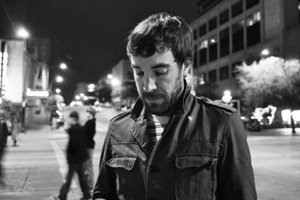 NS: No. I went to school with Barry and FSU to study filmmaking and I had to do everything, but I tried to focus on editing as much as I could. We were only supposed to cut two films per semester, but I’d cheat and cut more people’s films. I think I wasn’t even credited for some of them because I wasn’t supposed to edit that many in one semester. I hated lighting and I can’t do anything technical at all so I’d trade DP duties with editing duties. Secretly. I went to LA with big dreams of working straight on features as an assistant and working my way up. I interviewed for an internship with ACE, American Cinema Editors. They take film school grads and you meet tons of people and I knew no one, so I really wanted it. I went for the interview and they asked me what I was interested in working on and I said “features” and they said that’s great but everyone wants to do features, are you interested in TV? I said no I had no interest in TV and that I didn’t watch TV. I thought I did pretty well on the interview but I found out later eight out of ten people interviewing me were TV editors; so suffice to say I didn’t get the internship. So that’s how I came to LA, super pretentious and only wanting to work in film. So I went straight to reality TV. (Both laugh) The first show I worked on was a homeless makeover show. (More laughter) I got stuck in reality TV and made a lot of money at twenty-five, but I hated it and it was soulless and I felt like I lost all passion for filmmaking. Then Barry sent me his script for Medicine and so I quit my job and jumped on it and that was it.
NS: No. I went to school with Barry and FSU to study filmmaking and I had to do everything, but I tried to focus on editing as much as I could. We were only supposed to cut two films per semester, but I’d cheat and cut more people’s films. I think I wasn’t even credited for some of them because I wasn’t supposed to edit that many in one semester. I hated lighting and I can’t do anything technical at all so I’d trade DP duties with editing duties. Secretly. I went to LA with big dreams of working straight on features as an assistant and working my way up. I interviewed for an internship with ACE, American Cinema Editors. They take film school grads and you meet tons of people and I knew no one, so I really wanted it. I went for the interview and they asked me what I was interested in working on and I said “features” and they said that’s great but everyone wants to do features, are you interested in TV? I said no I had no interest in TV and that I didn’t watch TV. I thought I did pretty well on the interview but I found out later eight out of ten people interviewing me were TV editors; so suffice to say I didn’t get the internship. So that’s how I came to LA, super pretentious and only wanting to work in film. So I went straight to reality TV. (Both laugh) The first show I worked on was a homeless makeover show. (More laughter) I got stuck in reality TV and made a lot of money at twenty-five, but I hated it and it was soulless and I felt like I lost all passion for filmmaking. Then Barry sent me his script for Medicine and so I quit my job and jumped on it and that was it.
H2N: When you say script?
NS: Medicine was scripted.
H2N: But Humpday and Freebie were all improvised right?
NS: Yes.
H2N: How does your role as an editor and a storyteller vary in those two different scenarios?
NS: It’s very different. You’re definitely more involved in the storytelling with an improvised film. It’s very gratifying. You feel like you are a co-writer of the movie. The outlines are very detailed and the beats are all there. But you are getting 30-minute long takes were the actors are vomiting out anything that comes to mind and so it becomes like documentary editing. So you have to write the scene as you go.
H2N: So you are dealing with a lot of footage without multiple takes?
NS: Yeah and it’s risky. But it’s not too risky, since the films are so low-budget. So it’s important the actors have a storytelling sense because they have drive the story forth at all points. So that’s definitely not for everybody. Like on The Freebie our first actor for Darren did not work like that and we had to find someone else, Dax Shepard, to replace him.
H2N: How is the editing process like when you work with directors like Lynn and Katie? Do they say Nat, “Just do it?”
NS: I make my first cut.
H2N: Based on the outline?
NS: Yeah and based on the footage of course. Now my time in reality TV has paid huge dividends because some of the shows were horrible and I had to make something for TV out of them. So that’s where my chops came from. The first cut is always on my own, without a lot of discussion. I understand the directors’ visions pretty well. They are usually surprised at the first cut that’s its close to what they want. But at the same time you have to make choices that aren’t always what they want.
H2N: You have a deeper role as a storyteller because of the position you are in—not editing off a script.
NS: Yeah—with Katie it wasn’t such a big leap of faith because I had done it on Humpday. But on Humpday I had met Lynn on the festival circuit and we barely knew each other and I went to Seattle, didn’t know anyone. I didn’t know what would happen and it worked. I was there to cut while shooting so I got to assemble and tell them what worked and didn’t. As opposed to doing pickups months later when people have lost their momentum, working this way on Freebie, Humpday and Medicine there were no rehearsals since we had no money. Dax came on The Freebie twelve hours before we started shooting. But the first few days are always rough and we ended up re-shooting a bunch of that stuff.
H2N: I feel like one of the things that worked best in The Freebie was the nonlinear timeline. It leaves a lot open to interpretation for the audience. I loved that. Was that a concept you came up with or was written in the outline?
NS: That’s great you liked that, because I wasn’t sure if it worked still. It was written in, but the outline constantly jumped from past-present-future, which got crazy in the editing. You had no clue where you were. If we wanted to make that work we’d probably have had to change something significant with color or something to indicate if we were in past present or future. But we didn’t do that. We dismantled that concept and we kept the past and present, starting with Annie’s walk of shame and working backwards. The scene where the characters conceived of their plan was so long so we decided we could keep going back to that conversation. I never felt like we nailed it.
H2N: I thought that was important to the film working.
NS: Because it’s so talky so going back-and-forth on the timeline broke it up.
H2N: So you’ve worked with Barry, Lynn, and Katie who are all really amazing directors who seem to have bright futures for their work. Their work has a very similar feel, even though they are all different. Do you see yourself sticking to this type of film and this genre?
NS: You mean beyond people talking in rooms? At least Barry’s film was people of color! (Both laugh)
H2N: The films are very much about the characters and their relationships.
NS: Well I just got done cutting a project that was a total change of pace. It was a Sundance lab project. I worked there last summer as an editor. This was one of the projects I worked on. It was totally different: shot on 35mm way up in Alaska. It was an all Inuit cast and it was a murder story, so it was totally different. It had some action scenes. So it was definitely a change of pace. I was definitely feeling burned out on the improv movies. I also did a web series with Lynn after Katie’s movie for MTV, which was the same thing. Then I did one with Mark and Jay Duplass that’s going to come out at some point so I’ve been looking for a change and it was fun on this one but I was definitely ready to go back to this stuff. I’m working with Lynn next. And I’d like to go back and forth between different things. Barry’s work will always been more traditional films. But I love both styles.
— Alexandra Roxo

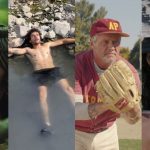






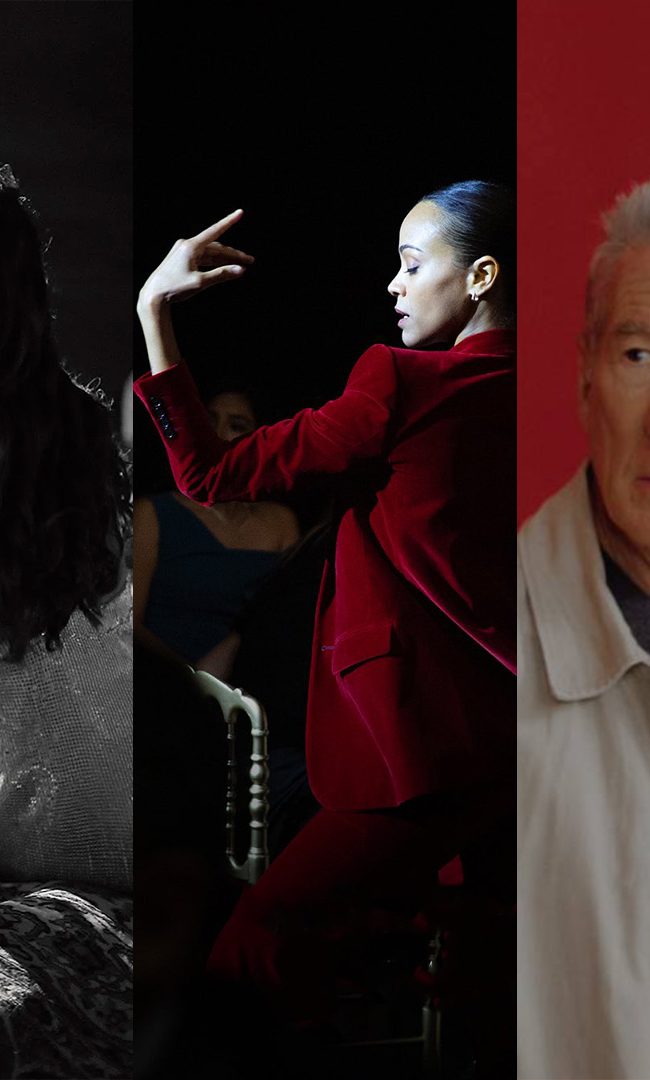
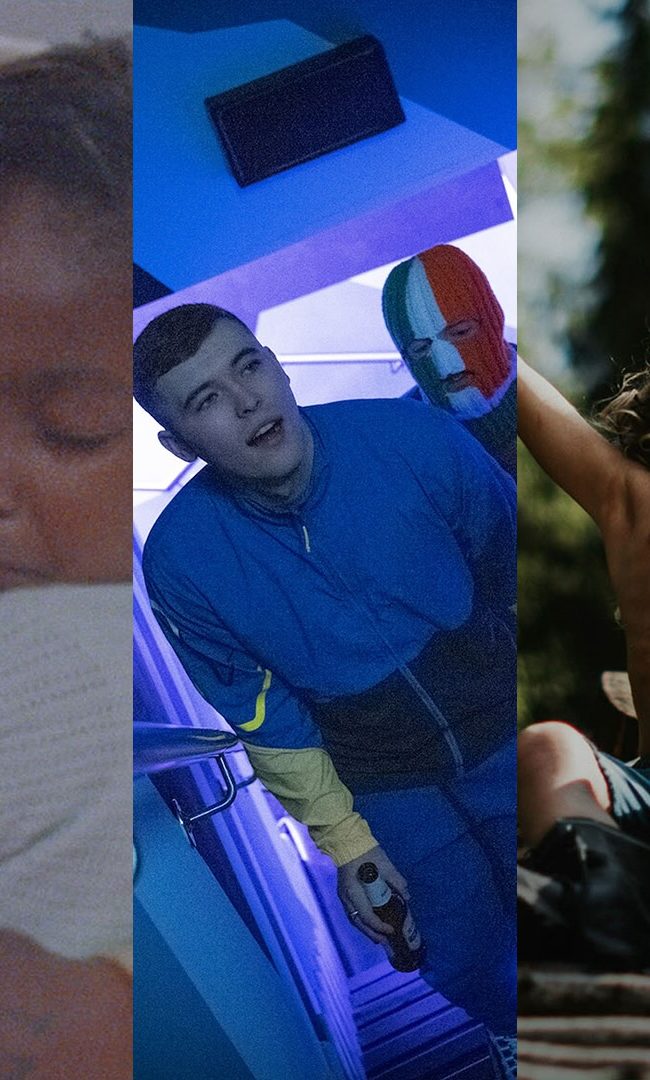


Xmliqq2012
バーバリー
バーバリーマフラー
バーバリー財布
バーバリー アウトレット
バーバリーバッグ
ティンバーランド
ティンバーランド ブーツ
ティンバーランド 靴
ルブタン
クリスチャンルブタン
グッチ
グッチバッグ
グッチ 財布
ノースフェイス
ノースフェイスアウトレット
モンクレール
モンクレールアウトレット
モンクレールダウン
ティンバーランド
ティンバーランド ブーツ
ティンバーランド 靴